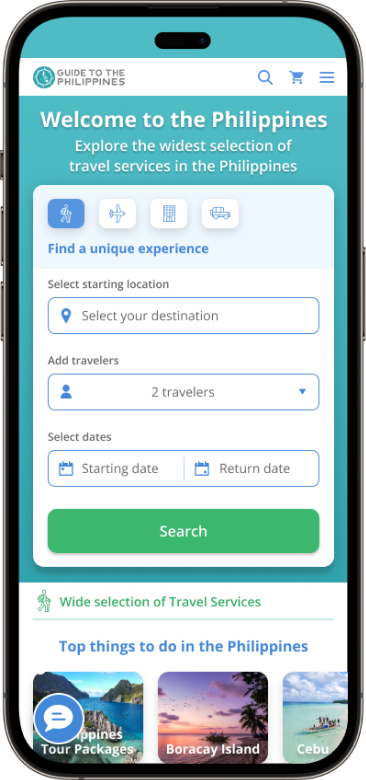Manila

Manila, the capital city of the Philippines, is a vibrant and dynamic metropolis where the country’s rich history and modern culture converge.
From centuries-old churches and colonial-era walls to skyscrapers, luxury malls, and bustling food streets, Manila City offers a multifaceted experience for every kind of traveler.
Whether you’re in the city for a cultural immersion, a food trip, a relaxing break, or just passing through on a quick stopover, there are plenty of layover tours in Manila that let you experience the highlights of the capital even with limited time.
Top Attractions in Manila City
As one of the most historic places in the Philippines, Manila tourist spots include a mix of Spanish-era landmarks and contemporary attractions. A must-visit is Intramuros, the walled city built in the 16th century during the Spanish colonial period. Today, Intramuros tours allow travelers to walk through cobblestone streets, visit Fort Santiago, and explore San Agustin Church, a UNESCO World Heritage Site.
Nearby is Binondo, the oldest Chinatown in the world. Through Binondo tours, you can sample delicious Chinese-Filipino cuisine, visit traditional herbal shops, and immerse yourself in the area’s lively markets and temples.
Modern-day Manila is also home to cultural centers like the National Museum Complex, the vibrant Baywalk along Manila Bay, and shopping destinations such as SM Mall of Asia and Greenbelt in nearby Makati City.
For travelers interested in quick escapes, you can take day trips from Manila to nearby destinations like Tagaytay City and the provinces of Pampanga, Batangas, and Rizal.
Where to Stay
From luxury five-star accommodations to cozy boutique hotels and budget hostels, there are plenty of Manila hotels to choose from across the city. Areas like Makati, Bonifacio Global City (BGC), and Ermita are popular for their central location and wide selection of restaurants, malls, and entertainment options.
For locals or visiting couples looking to unwind without leaving the city, there are several staycation packages available. The best staycation package in Manila City for couples often includes hotel stays with spa treatments, romantic dinners, and rooftop views—perfect for special occasions or spontaneous weekend getaways.
Planning Your Trip
Getting to and around the city is easy and convenient. There are numerous daily flights to Manila from domestic and international hubs, landing at Ninoy Aquino International Airport (NAIA).
From the airport, travelers can book transfers in Manila to their hotels or chosen destinations. For those who prefer more flexibility in exploring the city or nearby provinces, car rental in Manila is also a popular option.
To make the most of your time in the capital, travelers can choose from a variety of Manila tours and all-inclusive Manila tour packages that cover historical walks, food adventures, shopping, and cultural experiences. For those seeking a relaxing break just outside the city, there are also curated resorts near Manila packages, offering tranquil getaways within just a few hours’ drive.









